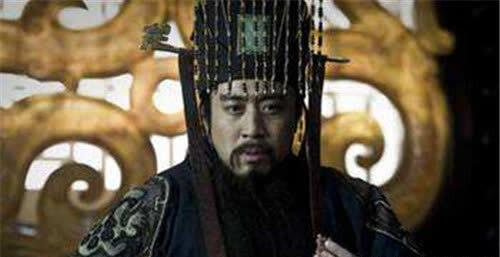The "Song Shi Taizu Benji" records that in 960 AD, the Song Taizu Zhao Kuangyin launched the Chen Qiao Mutiny, and the generals under his command, draped the yellow robe that had been prepared on his body and embraced Zhao Kuangyin as the son of heaven, which is the origin of the "yellow robe plus body". In our impression, it seems that "yellow robe" has long become synonymous with emperors, and the dragon robes worn by successive emperors are basically yellow. However, the first emperor in Chinese history, Qin Shi Huang, wore a black dragon robe.

In fact, the unique political significance of yellow is what happened after the Ming and Qing dynasties, just like the dragon robe, the holy will, the roof, etc., as long as it is an item that is related to yellow, it is the exclusive of the emperor, and the people are not allowed to use yellow at all, if any commoner dares to use yellow, it is a major crime of rebellion against the imperial power, and the consequences are often very serious. Before the Ming and Qing dynasties, the color of the emperors' dragon robes was not necessarily yellow, the dragon robes of the two Song Dynasties were mostly ochre red, and some colors of other dynasties, but the dragon robes of Qin Shi Huang were more unique and black.
As for why Qin Shi Huang made the dragon robe black, historians have different views. Among them, there is a view that the printing and dyeing technology of the Qin Dynasty was not developed, and it was impossible to print rich cloth, so Qin Shi Huang could only wear a black dragon robe with a relatively monotonous color, although it was somewhat obscure, but it was also stronger than white. However, even if there is some truth in this statement, it lacks realistic theoretical basis and no historical record to prove it, so it is not adopted.
The great thinker Confucius of ancient China once said that "evil purple seizes Zhu"; Xunzi also said that "qing is better than blue", and their words confirm for us from the side that the printing and dyeing technology at that time was already very developed, and Qin Shi Huang definitely did not wear black robes out of helplessness. Later, historians learned through the excavated historical materials that during the Qin Dynasty, black was not only not obscure, but also very auspicious, but also very auspicious, but the auspicious color of the Qin Dynasty. According to the view of Qin Shi Huang at that time, without black, there would be no Qin Dynasty.
We all know the habits of the feudal period that emperors would create a so-called "theory" in order to make themselves righteous, and the same was true of Qin Shi Huang. Qin Shi Huang claimed that his ancestor Qin Wengong caught a black dragon alive during a hunting trip, which not only implied that the Qin Empire unified the world, but also connected the national fortunes of the Qin State with "water", because the dragon lived in the deep sea, so it belonged to water. In addition, Zou Yan, the founder of the Yin-Yang Family, once created the "Five Virtues" theory, that is, the five elements of gold, wood, water, fire, and earth, and Qin Shi Huang was very fond of his theoretical ideas.
According to Zou Yan's theory, the five elements are transformed into the inner spirit of people and the character of the country in real life, that is, the "five virtues". However, in the end, the theory of the five virtues comes from the five elements, and the principle of mutual resistance between the five elements is still applicable. Water can extinguish fires, and water virtue can replace fire virtue; wood can make fire, and wood virtue can give birth to fire virtue. In order to concretize the content of the "Five Virtues", Zou Yan also gave the "Five Virtues" their respective auspicious colors: Jinde is white, Mude is green, Shuide is black, Huode is red, and Tude is yellow.
Qin Shi Huang was convinced of this set of theories, he believed that the Qin State was "water virtue", and black was the representative color of the Qin State, so his dragon robe chose black, but did not dare to choose yellow. Later, the Western Chu king Xiang Yu burned the Afang Palace, because the "Chu" character has two "wood" characters on the head, so the Chu state is Mude, according to the theory of xiangsheng Xiangke, water virtue must be conquered by Mude, so "death Qin must Chu".